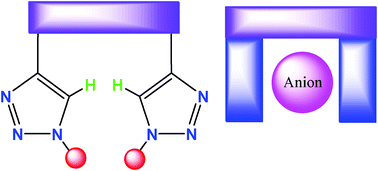Triazole: a new motif for anion recognition
Abstract
Anion receptors have attracted growing interest because of their role in chemistry, the environment, biology and medicine. The mis-regulation of anion flux causes a variety of lethal human diseases. Recently,


 Please wait while we load your content...
Please wait while we load your content...